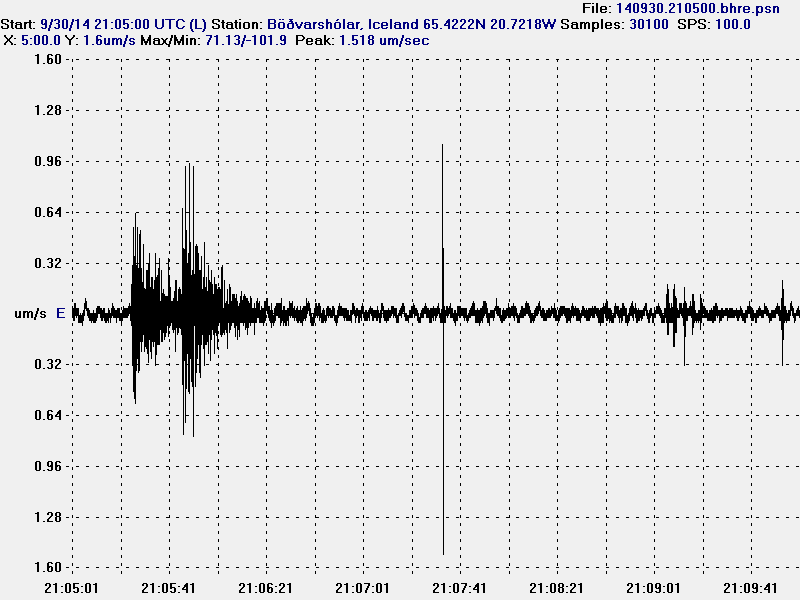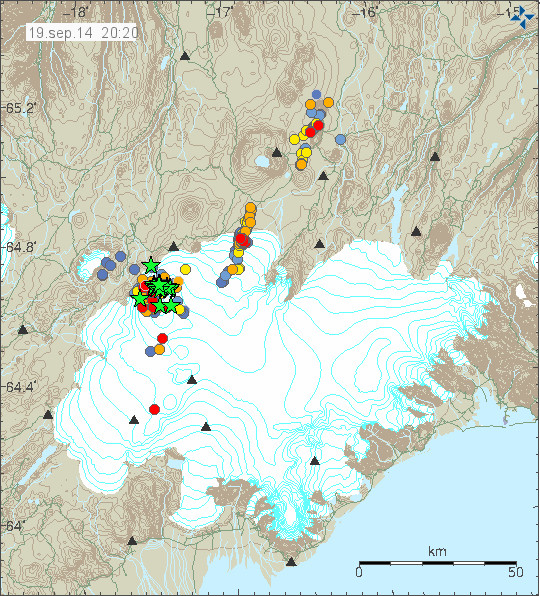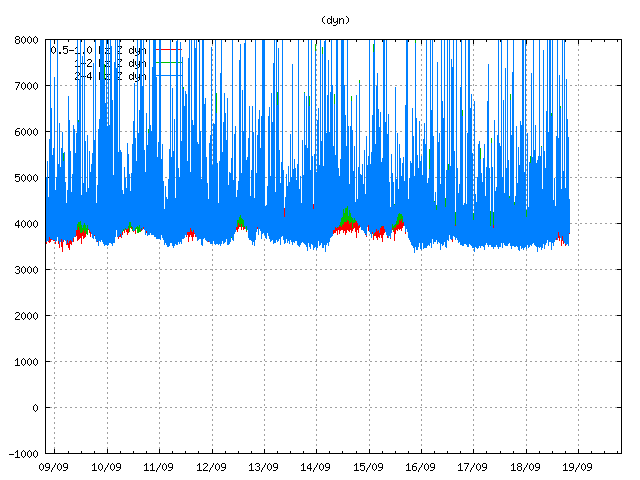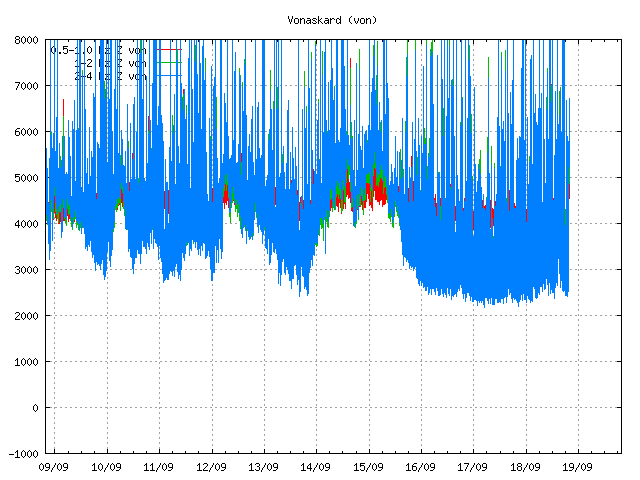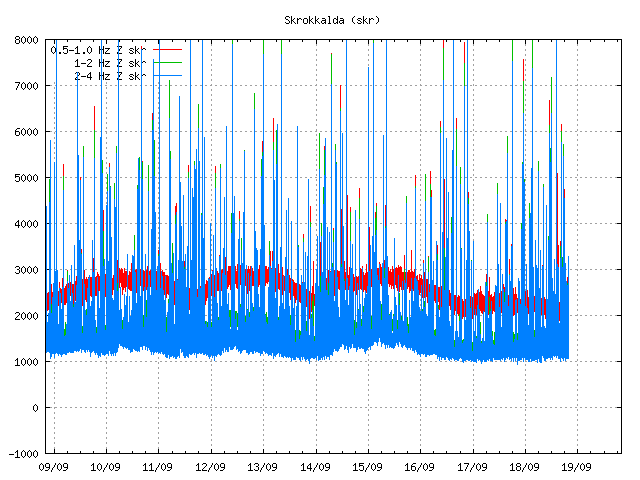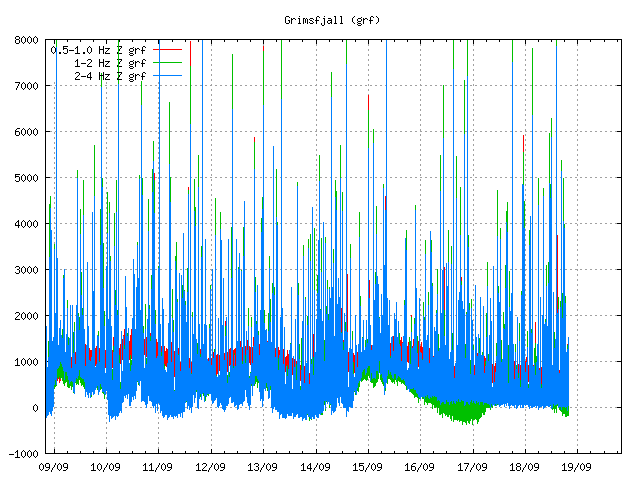This information is going to get outdated quickly if anything happens in Bárðarbunga volcano.
Current status in Bárðarbunga volcano at 23:03 UTC
- The eruption in Holuhraun continues at the same rate as before. There are no signs of it slowing down. I don’t know if new craters have opened up, it doesn’t look like it at the moment.
- Bad weather has prevented visibility check from the ground. There currently is storm in the area with limited visibility at the moment. Please check the wind map for more details.
- Largest earthquakes so far today where two magnitude 4,8 earthquakes that took place at 00:36 UTC and 13:27 UTC. Second largest earthquake took place at 06:39 UTC and had the magnitude of 4,6. Other earthquakes are smaller.
- It seems that earthquake activity is increasing in Bárðarbunga volcano. I don’t think that is a good sign. So far there are no signs of an eruption under the glacier, at least not a large one at the moment.
- Magma continues to flow into the dyke at the same rate as before. It also appears that the pressure inside the dyke is increasing since the eruption in Holuhraun is not keeping up with the material that is flowing into it.
- Due to bad weather I don’t have any more information on the eruption in Holuhraun.
- Bad weather is expected tomorrow in north Iceland and in the higher parts of Iceland at the same time. Snow is expected to fall in mountains and higher areas. This is going to mean poor or no visibility on Míla web cameras during this bad weather.
Information from GPS data
GPS data shows that the dyke that feeds the eruption in Holuhraun eruption is being well fed. There are no signs of any contraction taking place and it is clearly not cooling down. Earthquakes happen in the dyke when it expands since the eruption is not big enough. I don’t know why eruption has not yet broken up in a new place yet. As the times goes on the rock around the dyke gets soft from the heat, it turns into rubber type of mush that no longer breaks. This also applies to the crust above it. The depth down to the dyke is no more than 2 km, but it is expected that it is around 1 km or shallower in some areas.
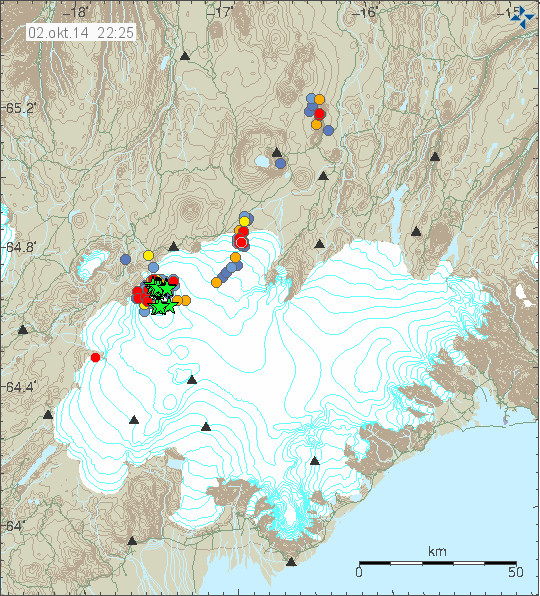
The earthquake activity in Bárðarbunga volcano today and for the last 48 hours. This is just the earthquakes that have been recorded today trough the bad weather that has been taking place. So I am expecting more earthquake to have taken place than are showing up here. Copyright of this image belongs to Icelandic Met Office.
When the earthquake data is connected to GPS data it tells the story of an dyke that is being well fed and is trying to expand into nearby crust. Creating minor earthquake activity in the process. It is erupting so it can only expand by the volume that the eruption is not erupting. I don’t know how much that is, the dyke it self is around 3 – 4 meters wide and around 10 – 15 km deep (best estimate).

The dyke size and feeding appears clearly here. I don’t know why it is moving west now, rather than east. This might suggest that something else is going on that does not appear on the surface yet (it might never appear on the surface). Copyright of this image belongs to University of Iceland.
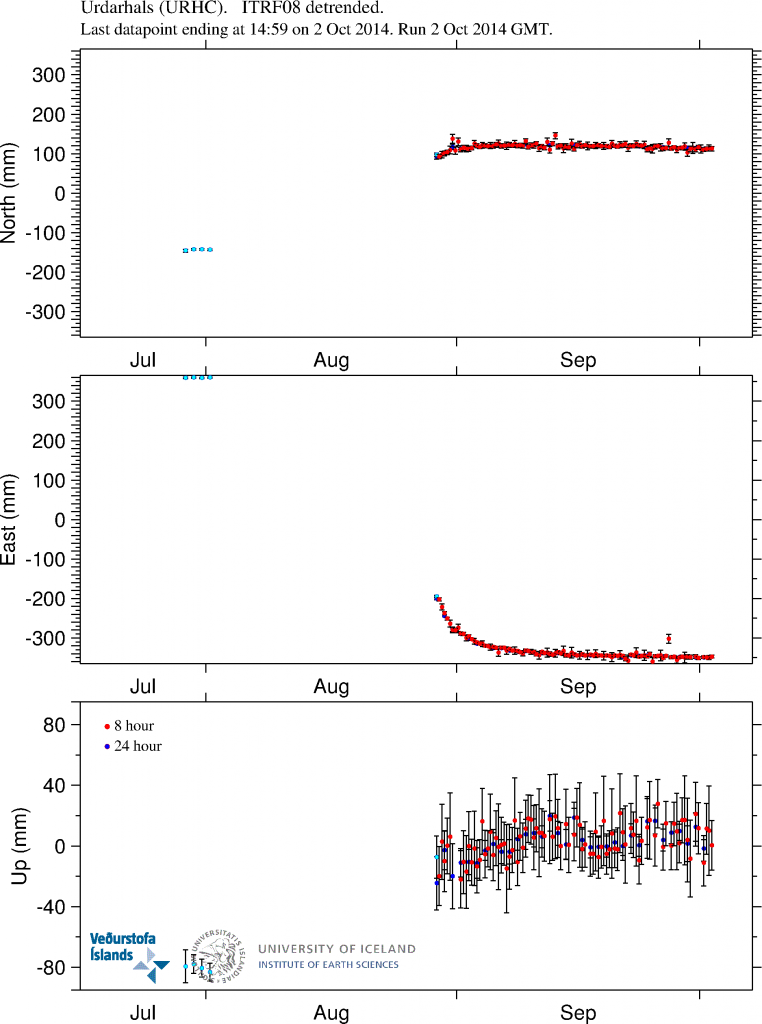
It is almost the same story on this GPS station. With the exception it is not moving to the west. It is stable where it is. This GPS station is almost on top of the dyke. So any change is going to appear quickly on it. Copyright of this image belongs to University of Iceland.
More GPS stations and information can be found here on University of Iceland website.
Break from Friday
I am going to go on a little break during this weekend from Friday. This means the following.
- Comments are going to stay a little longer in moderation queue if you are commenting for the first time, or posting many links. If your comment vanishes it means the spam filter ate it, so it is going to take me a little time to recover it. So just wait a little for it.
- If anything happens I might not be able to update this website with newest information right away. I will try to do soon as possible if I can.
- Update for the Friday (03-October-2014) might be short and come in late (or not at all). When I don’t know yet.
This has been a busy one and half month for me. I’ve been watching Bárðarbunga volcano for almost all hours of the day regardless where I am and what I am doing. After a while it starts to tire you. That is why Icelandic Met Office and University of Iceland have people on rotation during this eruption. I don’t have that option so I just have to take a short breaks and hope nothing big happens while I am resting my self for a short while.
I did learn during the Eyjafjallajökull eruption in 2010 that if I spend too much time in this I burn out and the recovery from that is long process. That is why I now have plan to prevent that during a long eruption, that covers eruptions that are longer than one month. Like is now the case in Bárðarbunga volcano.
I advice this for anyone how is going to watch this eruption for a long period of time (since it is going to last a long period of time). Spending too much time on an eruption is not good. Even a one day break is a good thing for anyone watching this eruption.
In the case there is no new article tomorrow. I wish everyone a good weekend.
Article updated at 23:42 UTC
Article updated at 23:43 UTC

